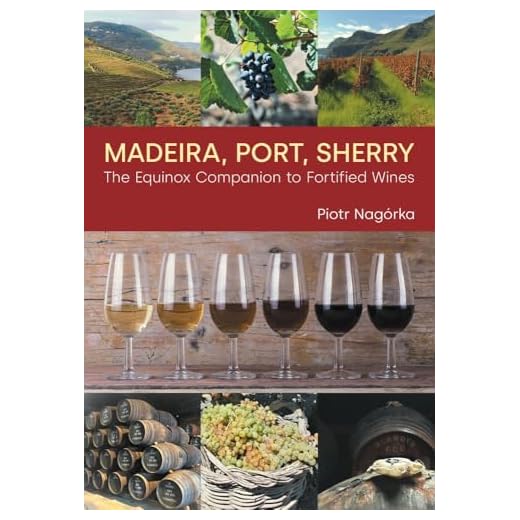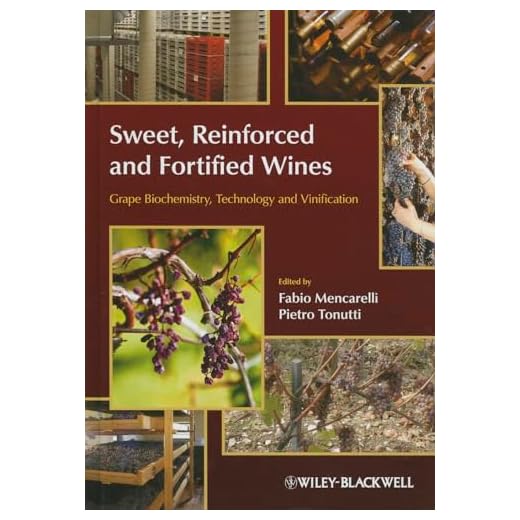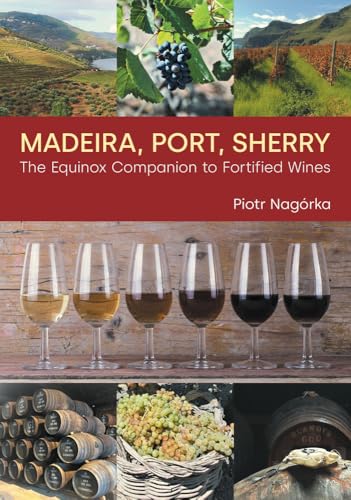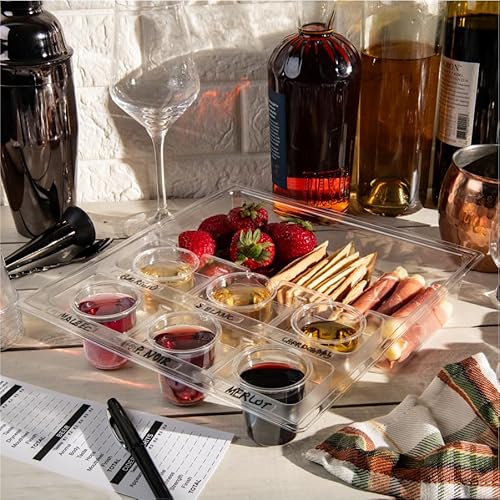

Both hues are present in the selection of this unique fortified beverage, with varieties ranging from light to deep shades. The lighter options, often produced from white grape varieties, exhibit a crisp and refreshing profile, while the darker selections, derived from red grapes, offer a rich, robust character that appeals to those who enjoy bolder tastes.
When choosing between these options, consider your palate preferences and the occasion. For lighter fare, such as seafood or salads, opt for the paler selections, as their acidity and brightness enhance these dishes beautifully. On the other hand, for heartier meals like roasted meats or rich cheeses, the deeper varieties complement and elevate the dining experience, bringing out the flavors of both the food and the beverage.
Ultimately, whether you lean towards the lighter or darker styles, both offer a delightful exploration of flavor complexity. Experimenting with different pairings can lead to exciting culinary discoveries, making each sip an opportunity for enjoyment and learning.
Is Madeira Wine Red or White?
Both hues are present in this fortified drink. It can be crafted in a variety of styles, including those that are deep in color and others that are lighter. The traditional classifications often include varieties such as Sercial, Verdelho, Bual, and Malmsey, each offering distinct flavor profiles and characteristics.
Color Variations and Styles
When exploring the options, you will encounter amber tones, which are typically produced from grapes that undergo longer aging processes. The darker varieties often boast rich, caramelized flavors and a full-bodied mouthfeel. On the flip side, the lighter selections tend to exhibit crisp acidity and notes of citrus and floral elements, making them exceptionally refreshing.
Pairing Recommendations
For optimal enjoyment, consider pairing the darker selections with rich, savory dishes like braised meats or strong cheeses. In contrast, the lighter offerings can complement seafood or light appetizers beautifully. Understanding these nuances can enhance your tasting experience significantly.
Understanding the Types of Madeira Wine
Focus on the distinct categories of this fortified beverage. There are four primary styles, each with unique characteristics and flavor profiles: Sercial, Verdelho, Bual, and Malmsey. Sercial is the driest option, exhibiting notes of nuts and citrus, ideal for pairing with seafood. Verdelho offers a medium-dry experience, showcasing more richness, making it versatile for various dishes.
Bual is sweeter, often featuring caramel and fig flavors, which complements desserts beautifully. Malmsey, the sweetest of them all, delivers luscious notes of chocolate and coffee, making it a perfect match for rich desserts or enjoyed on its own. Understanding these styles enhances your appreciation and pairing possibilities.
Additionally, vintage offerings are noteworthy. They undergo a longer aging process, allowing complex flavors to develop. Look for labels indicating the year for a unique tasting experience. For those seeking an everyday selection, consider the blended varieties, which provide consistency and a balanced profile at accessible price points.
When exploring these options, pay attention to the age classifications: 5, 10, 15, and 20 years, which indicate the minimum aging period. The older the selection, the more intricate and refined the flavors become, offering a richer tasting experience.
Always serve these selections at the correct temperature to fully enjoy their distinct characteristics–chill lighter styles and serve richer varieties slightly warmer. This attention to detail will elevate your tasting experience, allowing you to enjoy all the nuances these exceptional beverages have to offer.
Key Differences Between Red and White Madeira
Understanding the distinctions between the two primary styles of fortified beverages produced on the island of Madeira can enhance your appreciation and selection process. Here are the essential differences:
Color and Grape Varieties
- Color: The most obvious difference lies in the hue; the darker version tends to be deep ruby to tawny in appearance, while its lighter counterpart showcases a golden to pale straw color.
- Grape Varieties: The darker style is typically made from grapes like Tinta Negra and Malvasia, while the lighter variant often utilizes grapes such as Sercial and Verdelho.
Tasting Notes
- Flavor Profile: The richer, darker option usually exhibits notes of dark fruits, chocolate, and spices, while the lighter selection is more likely to offer citrus, nuts, and floral notes.
- Sweetness Levels: Dark selections can range from dry to sweet, though they often lean toward the latter. Light versions are often drier, with a crisp finish.
For those looking to capture stunning moments of your tasting experiences, I recommend checking out the best compact digital camera with rechargeable batteries for convenient photography.
Ultimately, the choice between these styles will depend on your personal preference and the dishes you wish to pair them with. Each style offers a unique tasting experience worth exploring.
Popular Varieties of Madeira Wine Explained
Among the diverse selections, the following types stand out for their unique characteristics and flavor profiles:
Malvasia
Known for its rich sweetness, Malvasia offers flavors of honey, caramel, and dried fruits. This variety is perfect for those who enjoy a luscious, dessert-like experience. Pair it with blue cheese or fruit-based desserts for an exquisite combination.
Bual
Bual strikes a balance between sweetness and acidity. With notes of toffee, nuts, and chocolate, it makes for an excellent choice alongside savory dishes or rich desserts. Its versatility allows it to complement a wide range of foods, including roasted meats and creamy desserts.
Sercial
Sercial is the driest variety, showcasing bright acidity and citrus notes. It’s an ideal aperitif and pairs wonderfully with seafood, especially grilled fish or shellfish. The crispness and refreshing qualities make it a favorite for warm-weather occasions.
Tinta Negra
This versatile grape can produce wines ranging from dry to sweet. Tinta Negra’s flavor profile varies widely, often featuring dark fruits and spices. It’s suited for casual sipping or pairing with hearty dishes like stews and grilled meats.
Each of these varieties offers a unique tasting experience, making them worthy of exploration. When selecting a bottle, consider the accompanying food to enhance the overall enjoyment.
How to Serve and Pair Madeira Wine
Serve at a temperature between 50°F to 60°F (10°C to 15°C) for optimal enjoyment. Use small glasses, like sherry glasses, to enhance the aroma and flavor concentration.
Pairing Suggestions
Pair with a variety of dishes. Here are some tailored recommendations:
| Food Type | Recommended Pairing |
|---|---|
| Cheese | Blue cheese or aged Gouda |
| Meats | Grilled meats or rich stews |
| Seafood | Smoked salmon or seared scallops |
| Desserts | Chocolate torte or almond biscotti |
Crafting the Experience
Consider the wine’s age and style when pairing. Younger varieties work well with lighter fare, while older selections complement richer dishes. For dessert, a sweeter version can elevate the meal to new heights. Always balance the flavors to enhance the overall dining experience.
Myths and Facts About Madeira Wine Color
Many people mistakenly believe that all fortified beverages from this region are either dark or light. In reality, there is a wide spectrum of hues, and both shades are produced using distinct methods and grape varieties. The misconception often arises from the historical prominence of darker types, which can overshadow the equally remarkable lighter options.
One common myth is that the color of these beverages dictates their flavor profile. While color can provide some clues, it is not a definitive factor. For instance, a pale version can be rich and complex, while a darker variety might be surprisingly delicate. Factors such as aging, production techniques, and grape selection play a more significant role in the taste experience.
Another prevalent belief is that lighter versions are exclusively for certain occasions, while darker ones are more versatile. In truth, both types can shine in a variety of settings. The lighter styles often complement seafood and salads beautifully, while the darker counterparts can elevate richer dishes like meats and desserts.
Understanding the aging process is crucial in appreciating the color. As they mature, the darker varieties tend to develop a more intense color due to oxidation, while lighter styles may maintain or even brighten their hue depending on the aging conditions. This dynamic aspect adds to the allure of exploring different offerings.
It’s vital to recognize that the classification into light and dark is not merely aesthetic but also reflective of the unique terroir and grape varieties used. For example, the Tinta Negra variety is known for producing darker variations, while Sercial and Verdelho grapes are associated with the lighter spectrum.
In conclusion, while color can provide insight into the nature of these beverages, it is the complexity of flavor, the method of production, and the occasion that truly define them. Don’t let myths cloud your appreciation; explore both shades to discover their unique qualities and how they can enhance your dining experiences.
FAQ:
Is Madeira wine exclusively red or white?
No, Madeira wine is not exclusively red or white. It encompasses a range of styles, including both red and white varieties. The white Madeira wines are typically made from grape varieties such as Sercial, Verdelho, and Bual, while the red Madeira wines are produced from grapes like Tinta Negra and Malvasia. Each style offers distinct flavors and characteristics, making Madeira a versatile choice for wine enthusiasts.
What are the main characteristics of red Madeira wine compared to white Madeira?
Red Madeira wine is usually richer and has more robust flavors than white Madeira. It often features notes of dark fruits, spices, and chocolate, which develop through the aging process. In contrast, white Madeira wines are known for their acidity and lighter profiles, often showcasing citrus, floral, and nutty flavors. The aging process for both types can also influence their taste, but generally, red Madeira tends to be fuller-bodied, while white Madeira is crisper and more refreshing.
Can I serve Madeira wine with food, and does the type of Madeira affect food pairing?
Yes, Madeira wine can be served with food, and the type of Madeira you choose does influence food pairing. For example, dry white Madeiras like Sercial pair well with seafood, poultry, or salads due to their acidity. On the other hand, sweeter varieties like Bual and Malvasia complement desserts, cheeses, or rich meat dishes. The diverse styles of Madeira make it a versatile option for various culinary experiences, enhancing the overall dining experience.







